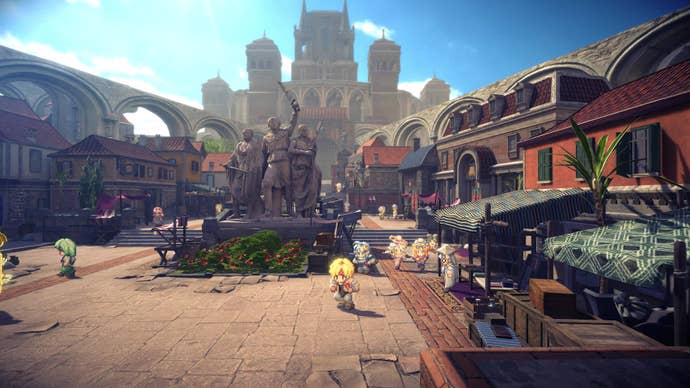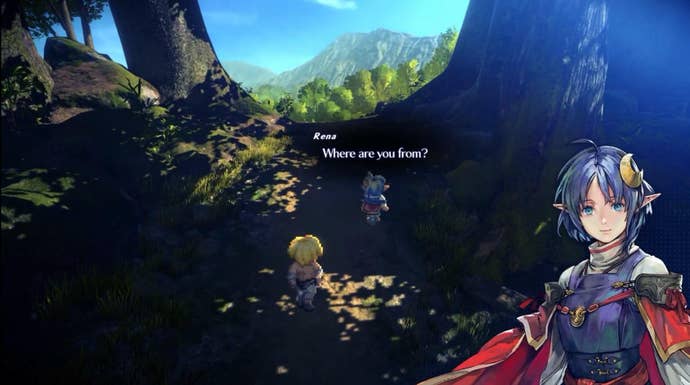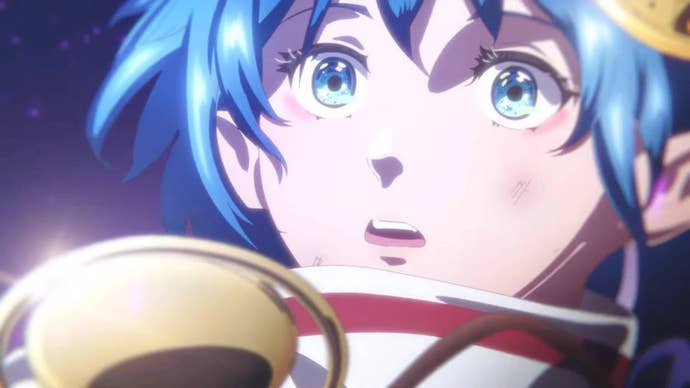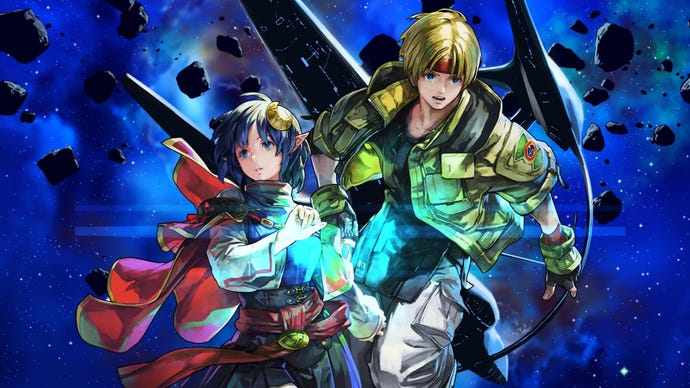Star Ocean: The Second Story R is a Remake with a capital R with a plan to please three decades' worth of fans
Star Ocean: The Second Story R buries the lede, but once you dig into it, there's something very appealing to long-time series fans.
As product names go, Star Ocean: The Second Story R buries the lede. That ‘R’ stands for ‘Remake’ - and if I were behind the marketing of this title, I’d really want to emphasize that this is a full-blown, ground-up do-over. Like, R could stand for 'remaster' - this ain’t that. This is a full-fat Remake, with a capital R.
A slightly-bad name is sort of par for the course for Square Enix RPGs, of course - and Star Ocean 2’s do-over can be regarded as a quintessential Square experience in several other ways, too. It’s the company doing what it does best: making a staunchly traditional role-playing game, with an incredible visual flair, with ambitions that help to outstrip and minimize design flaws.
Basically, it has the energy of a golden-age Square title. Which makes sense, as the original game’s 1998 release puts it slap bang in the middle of the company’s explosive PS1 heyday. Playing Second Story, you can sense an intense reverence for the original versions of the game (versions, plural; it was remastered for PSP in 2008)m and it’s that worshipful attitude towards the past that makes this a particularly special-feeling remake.
Here’s a specific example. In the menus of The Second Story R, each character is represented with a portrait, as is RPG tradition. But with the press of a button, you can switch between three different portrait styles, allowing you to see the various artistic interpretations of Star Ocean 2’s characters from 1998, 2008, and today. It’s a small nod, but where most remakes present the new materials and remove the old, this game is keen to preserve all eras. It’s demonstrative of the development philosophy.

“It’s not just limited to the illustrations, but it’s really our approach to the game as a whole,” says Kei Komaki, Square Enix’s producer on the game, when asked about the portraits. “We wanted to value the players of the original PlayStation 1 game from 1998 and also the PSP version from the 2000s by including these materials and these elements from both of the other versions as well as alongside the updated versions for the remake.”
“We're trying to show that we have that respect for the players of those previous games, and how they remember the game.”
Respect hammers the nail on the head; this remake practically oozes it. And yet, it’s also not afraid to take chances. The biggest change comes in the visuals, which are at once faithful to the original and quite different.
Specifically, the past versions of Star Ocean 2 featured pre-rendered CG backdrops, as most Square games of its era did. Hand-drawn 2D sprites were laid atop those CG backgrounds, while battles featured rudimentary 3D backdrops. For the remake, the team elected to keep the sprites - but ditch the CG for a fully real-time world presentation.

“What I really wanted to do was recreate and recapture the same kind of feelings and emotions that people would have had when they played the original PS1 version or the PSP version,” Remake director Yuichiro Kitao explains.
“The way that I approached that was to think - well, imagine that I am a little 2D sprite, a little character in the game myself. What would these places look like to me? How would it feel to explore the dungeons, the field areas, the castles? So that was really the approach we took when creating art. I went away and I asked the art team to capture that sense of being a little pixel character in this game and experiencing it for yourself.”
The logic, then, was to offer up a greater sense of scale. With real-time backgrounds, more can be accomplished. There can be more movement in the background itself, and even the odd dynamic camera movement. The backgrounds also take on a more generally realistic bent - which creates challenges when integrating them with the glorious nature of unvarnished, hard-edged pixel art characters.
The idea of mixing gorgeous real-time 3D backgrounds with 90s-era 2D sprites was deliberately meant to offer something “new and fresh,” says art director Yukinori Masuda. While Square Enix has experimented with this before in its ‘HD-2D’ titles like Octopath Traveler, The Second Story R differs quite significantly thanks to the nature of the backgrounds and Star Ocean’s action-focused combat. But in creating that fresh look, which is rather fetching, the developers created a challenge for themselves.

“Because we wanted to have this kind of nostalgia to the sprites, the pixels did kind of stand out a little bit too much, just putting them straight in. They didn't necessarily feel like part of that world,” Masuda admits.
“But instead of blurring them we kept the pixels sharp, and then we added that depth with lighting and shaders, and shadows. This made them feel like they were in that world while still retaining the classic look. So, yes - that was the way we approached the blending, the fusion, of the two different art styles.”
Nostalgia is a hell of a drug - and for cult, niche game franchises like Star Ocean, it makes for an incredibly tight needle for developers to thread. There are multiple factors at play. Old-time fans have to be satisfied - with the added complication here that depending on when they played, their memories will be of two different versions. But also, as ever, there’s a desire to find a new audience - for the Star Ocean series to grow.
Talking to the developers, there’s a clear realization that Star Ocean is not, say, Final Fantasy. This space-faring sci-fi RPG has always set itself apart from many of Square’s other titles. When this game was new, it was one of the only action-focused games in the publisher’s stable. In many ways, Star Ocean was always a bit ahead of its time - which is what gives this Remake potential. With fresh-but-familiar art and slightly streamlined and improved RPG action, everything about that game has been designed for a broader appeal.

“I think that these days in Europe in particular there is an appetite for RPGs from the 90s, what they might call 'retro RPGs'. I'm not necessarily sure that Second Story R quite falls into that category, but there is that sort of trend and willingness to play these kinds of games,” Komaki muses.
“So while we do want people to approach this and have those nostalgic feelings and enjoy the game from that perspective, it is also a new game that we are releasing. And so we're hoping that we can reach lots of new players and new people as well. And if we have fans who approach it from a sort of nostalgic perspective and then find they really enjoy the game, hopefully they'll tell their friends, tell other people and maybe it'll get some traction from there.”
Star Ocean: The Second Story R releases for Nintendo Switch, PS4, PS5, and PC this week.

